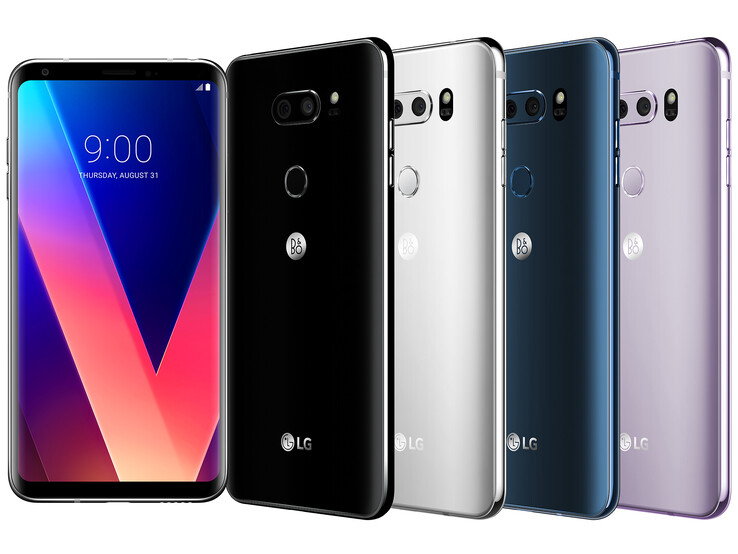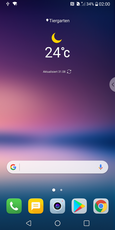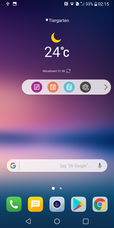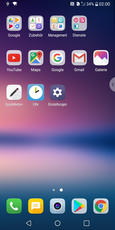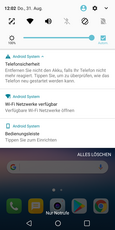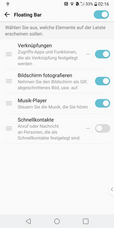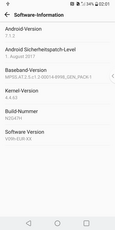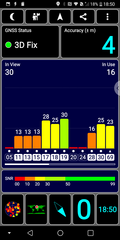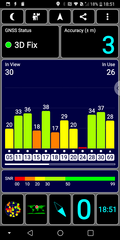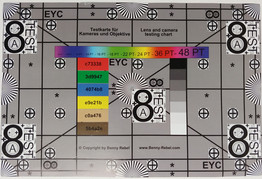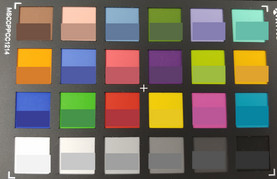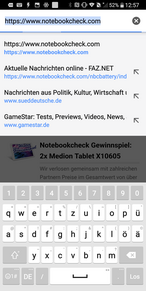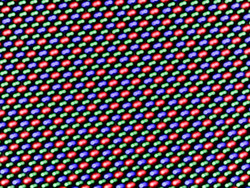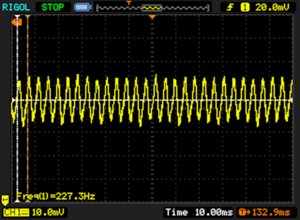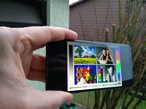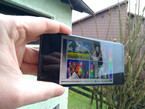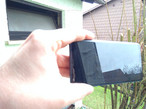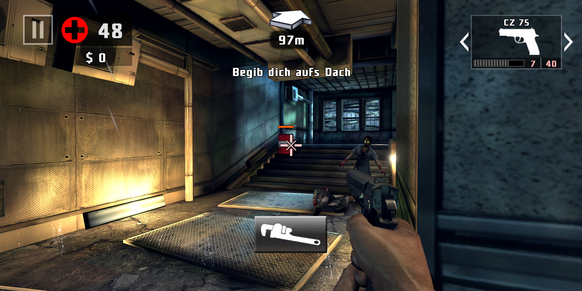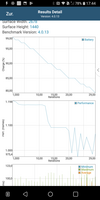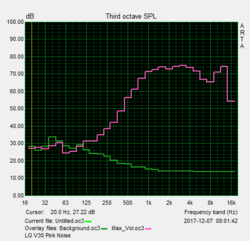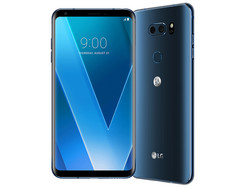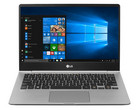LG V30 Smartphone Review
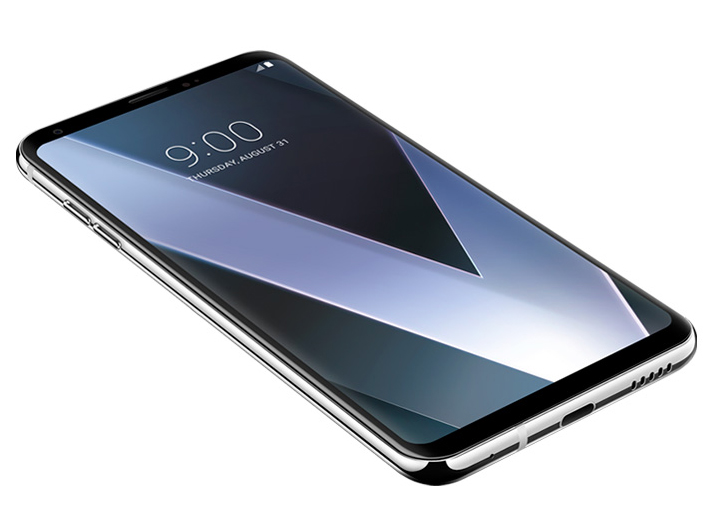
For the original German review, see here.
After a one-year hiatus, LG now brings its V series to Europe again. The second flagship series is now also equipped with the current premium SoC by Qualcomm and thus offers fast performance in all areas. This is a great plus, especially for the communications module. In addition to Gigabit LTE, there will also be Bluetooth 5.0, although it will have to wait for the Android 8.0 Oreo update that might still come this year. At 81%, the display to surface ratio is very good.
The LG V30 offers 4 GB of working memory and 64 GB of internal storage. In addition, there is supposed to be a V30+, which has 128 GB of storage. Both models can be expanded via an optional microSD card. The dual camera has been updated and now offers a larger aperture with f/1.6, which should still allow taking great pictures, especially in low light conditions. The resolution of the main camera has also been increased to 16 MP. In terms of the display, LG is now using the in-house OLED technology, providing the V30 with a FullVision panel in the 18:9-format (2:1). In addition to a fingerprint sensor, the V30 also offers facial and voice recognition to unlock the smartphone.
The LG V30 must endure a comparison with all the other top smartphones. These include the HTC U11, the Huawei P10 Plus, the Sony Xperia XZ Premium, the OnePlus 5, the Honor 9 and the iPhone 7 Plus. In terms of price and size, the Samsung Galaxy Note 8 and the Huawei Mate 9 in particular are the most similar competitors.
Our V30 model is a preproduction unit, with the software and hardware not being the final versions. There may still be changes until November, when it comes on the market.
Case
Despite its large 6-inch display, the LG V30 is very manageable and compact. LG itself specifies that it has the same dimensions as conventional 5.5-inch smartphones, which is also obvious in our size comparison graphic. With only 158 grams (~5.6 oz), it is surprisingly light and also comfortably flat. Due to the rounded Corning Gorilla Glass 5, the smartphone fits comfortably into the hand, but it attracts fingerprints like a magnet.
The workmanship of the LG V30 offers no reason for complaints. The seams between the materials are cleanly built, even though they can be felt. The gaps are tight and even. The card slot also fits flush into the case frame and accepts a Nano-SIM card as well as a microSD card in our test unit. The smartphone is torsion-proof and creaks only minimally. Due to the OLED technology, even pressing hard on the case or the front glass does not result in a wave image on the screen.
In accordance with IP68, the case is protected against dust and water. In addition, it survived 14 tests according to the military MIL-STG-810G standard without any damage. In the LG V20, it was still possible to replace the battery, but the manufacturer has changed this in the new model. The LG V30 is available in the colors Aurora Black (black), Cloud Silver (silver), Moroccan Blue (blue), and Lavender Violet (lavender), although for the time being, the last color variant will not be available in Germany.
Connectivity
Its retail price of slightly over $800 seems pretty confident given that similar high-end smartphones, such as the Huawei P10 Plus, the Sony Experia XZ Premium, or the OnePlus 5, can be had for around $600 already. On the other side of the spectrum are the more expensive alternatives, like the Apple iPhone 8 Plus or the Samsung Galaxy Note 8. Compared to these phones, the LG V30’s 4 GB of RAM seems sort of low - most of its competitors are equipped with 6 GB or more. Storage space is fairly uniform at 64 GB, only the Huawei offers 128 GB by default whereas higher storage tiers on the other models are optional and quite pricey upgrades. Fast UFS storage has become the de facto standard for phones at this price point.
The LG V30 supports storage expansion via microSD cards. Unfortunately, these can only be formatted as external storage. Apps have then to be moved onto the microSD card manually. As we speak, a Dual SIM version is not available in the European and North American markets.
The V30’s USB port only supports USB 2.0, which is pretty poor for a premium device. On the plus side, it supports USB-OTG, NFC, and Wi-Fi Direct.
Software
The smartphone comes with Google Android 7.1.2 Nougat preinstalled, with security patches as of September 1 2017. Consequently, at the time of writing it was already slightly outdated, and we expect more timely and frequent updates for flagship smartphones. The user interface is very similar to that of the LG G6 but offers an extra floating bar. Unlike the V10 and V20, the V30 does not have an additional display for shortcuts and extra information so LG had to make up for the lack thereof through software. The floating bar can be moved around freely anywhere on the display.
The settings menu has been amended by several new options, for example a feature called “smart settings” that subsumes various settings depending on location, or the possibility to start a particular app every time headphones are connected to the phone. The operating system can further be personalized with themes and screen content can be downsized for one-handed operation. Even the display resolution and white balance are customizable to one’s liking. And these are only but a few of the new options available on the LG V30.
Out of the box, there are no third-party or trial applications installed on the phone but LG does add a few in-house apps. An update to Android 8.0 Oreo has already been announced, with a closed beta already being rolled out to users in Korea and a final version expected in early 2018. According to a report on XDA Developers, Project Treble - the separation of core Android from any OEM-specific components - has not been implemented therein. LG states that in addition to a plethora of new features and enhancements Android Oreo is also supposed to improve battery life.
Communication and GPS
The V30 supports all current and common Wi-Fi standards, including the less commonly used and therefore less congested 5 GHz band. Wi-Fi performance was very fast, and the V30’s RX bandwidth was twice as high as the already quite fast OnePlus 5’s. Transmitting data was incredibly fast as well, and only the Samsung Galaxy S8 Plus was able to keep up with the V30. Real world tests close to the Wi-Fi router revealed an excellent Wi-Fi reception with websites loading blazingly fast. This was also the case at a distance of 10 m (around 33 ft) to the router with three massive walls in between and Wi-Fi signal strength at around 75 %.
Thanks to LTE Cat. 16 the V30 is a true Gigabit smartphone: its maximum downstream and upstream transmission bandwidth is 1,000 and 150 MBit/s, respectively. Obviously, real world performance depends on the cellular network and operator in question. With a total of 13 bands LTE support is decent but not as extensive as on other flagships. This will become particularly important when traveling abroad, where the OnePlus 5 with its support for 22 different LTE bands is the king of the hill. With 4/5 bars even indoors, cellular reception in German cities with decent Vodafone coverage was okay.
Location services worked well indoors as long as we were close to a window. In that case, accuracy was decent at 4 m (13 ft). Outdoors, GPS accuracy was even better at only 3 m (10 ft).
To determine overall GPS accuracy and usability, we took the LG V30 on a bike tour together with a Garmin Edge 500 professional GPS. The respective recorded tracks of both devices only differed by around 40 meters (131 ft) in the end, which means that GPS tracking on the LG V30 is pretty accurate. Only when driving through the woods did the V30 lose GPS connectivity resulting in an alleged loop instead of the actual bend. Given that overall accuracy was still very good with plenty of measuring points along the way it is safe to say that the LG V30 is more than usable for everyday navigation purposes.
Telephony and Call Quality
LG has modified the phone app slightly. When launched, the dial pad loads first with recent calls, contacts, and groups located in tabs at the top of the screen. Call quality can be improved in the phone’s settings, and there is also an option to enable active noise cancelling.
Overall call quality was decent, and both conversational partners had no trouble understanding each other very clearly. Speaker phone worked reliable and well, although it required the user to raise his or her voice somewhat.
Cameras
The cameras are similar to the LG G6. In other words the front-facing camera is still equipped with a 5 MP sensor and capable of taking selfies at an angle of 82° or 90°. Videos are recorded in FHD. Selfies were acceptable yet visibly overexposed. Accordingly, photos taken with the front-facing camera show less details in bright areas, and are somewhat blurred along the edges.
The main shooter is a dual-lens camera with a 13 MP and a 16 MP sensor. Compared to the G6’s camera, its main sensor resolution has thus been increased by 3 MP. It also no longer features plastic lenses but lenses made of glass for improved light transfer instead. As before, the second camera features a wide angle lens (120°). Both cameras are supported by optical images stabilization yet the main camera’s pixel size has been reduced to 1 µm resulting in a noticeably worse low-light performance despite the higher aperture of f/1.6. That said, low-light performance is still more than acceptable when compared to other smartphones, with plenty of details and decent focus. Unlike the artifacts the iPhone X produced the LG V30’s low-light photos were more natural with a fairly low level of noise.
Under decent lighting conditions photos turned out very well, with a very nice focus and high details. When compared to the iPhone X, the photos were slightly darker and dark areas lacked detail. Edges were clear-cut and generally speaking, the photos were very rich in detail.
LG has also improved video recording, and has added quite a few new extras compared to the G6. For example, a feature called Cine-Video produces very atmospheric videos. Another feature is point zoom, where you select a section of the image the camera softly zooms in to and out of. These features worked very well overall.
For the sake of better comparability, we test all cameras in our lab under normalized conditions. Unfortunately, the V30’s cameras have failed to produce a sharp image rich in detail in our lab. Colored areas seemed somewhat pixelated, and the edges of text placed directly in front of colored backgrounds were slightly blurred. The focus on our reference card photo was significantly better in the middle and visibly deteriorated towards the edges, and colors were too bright.
Accessories & Warranty
In addition to the phone itself, the box also contains a quick charger, a USB cable, a SIM tool, and a nicely designed in-ear headset co-created by B&O. The V30 is Google Daydream compatible with VR headsets available for around $100. LG does not list any additional accessories for the V30 on its website.
Please see our Guarantees, Return Policies and Warranties FAQ for country-specific information.
Input Devices & Handling
The V30 ships with LG’s self-developed keyboard app enabled by default. It supports various customizations, such as for example changing the keyboard layout or a continuously adjustable keyboard height. It also features swipe gestures and word suggestions. Typing worked quite well but they keys are too narrow for big hands. Other keyboard apps can be downloaded from Google’s Play Store.
The touchscreen was reliable and fast, and detected input and movement up to its very edges.
An additional way if interacting with the phone is implemented through aforementioned floating bar. It allows preconfiguring quick-set actions which can then be triggered by double-clicking the volume down button. The phone also supports locking the screen as well as waking up from standby by double tapping on the home screen.
In addition to the rear-mounted fingerprint reader, which worked as fast and reliable as expected, the phone can also be unlocked via face or voice recognition. LG does display a warning that these methods are less secure than the fingerprint reader. For example, the phone could be unlocked by someone who looks similar to the user or someone with a similar voice. In addition, facial recognition is by far not as sophisticated as Face ID on the iPhone X and doesn’t work in the dark at all. The strictness and thresholds of facial recognition parameters are configurable but be warned: the system became much slower and less reliable with increased accuracy and strictness: when enabled the phone had trouble detecting the reviewer’s face frequently, which means we cannot recommend enabling this feature at this point just yet. Voice recognition was more reliable overall, but like facial detection it also results in decreased overall security.
Display
The V30’s large 6.0-inch display is based on LG’s FullVision technology known from its TV division. Like the G6’s display its display ratio is 2:1, and the display is therefore narrower than regular 16:9 devices. Pixel density is very high thanks to the panel’s high 2880 x 1440 resolution, and the display is very crisp. Support for HDR10 content is included as well.
Average brightness was determined at 428 nits and therefore acceptable albeit significantly lower than on most other high-end smartphones. An 87 % brightness distribution is decent overall, but also means large uniform colored areas tend to be less uniform than expected. At brightness levels of 80 % and below, the screen starts to flicker at a very low 227 Hz. Sensitive users might be able to notices this screen flickering. If you need to make sure we suggest trying out the display for a few minutes before making any final purchase decisions.
| |||||||||||||||||||||||||
Brightness Distribution: 87 %
Center on Battery: 432 cd/m²
Contrast: ∞:1 (Black: 0 cd/m²)
ΔE ColorChecker Calman: 4.18 | ∀{0.5-29.43 Ø4.78}
ΔE Greyscale Calman: 5.3 | ∀{0.09-98 Ø5}
100% sRGB (Calman 2D)
Gamma: 2.33
CCT: 7487 K
| LG V30 OLED, 2880x1440, 6" | LG G6 IPS LCD, 2880x1440, 5.7" | Samsung Galaxy S8 Plus Super AMOLED, 2960x1440, 6.2" | Huawei P10 Plus LTPS, 2560x1440, 5.5" | Sony Xperia XZ Premium IPS, 3840x2160, 5.5" | OnePlus 5 AMOLED, 1920x1080, 5.5" | Apple iPhone 8 Plus IPS, 1920x1080, 5.5" | |
|---|---|---|---|---|---|---|---|
| Screen | 13% | 43% | 37% | 32% | 32% | 44% | |
| Brightness middle (cd/m²) | 432 | 646 50% | 560 30% | 568 31% | 578 34% | 426 -1% | 559 29% |
| Brightness (cd/m²) | 428 | 611 43% | 562 31% | 562 31% | 568 33% | 431 1% | 538 26% |
| Brightness Distribution (%) | 87 | 89 2% | 93 7% | 92 6% | 92 6% | 93 7% | 90 3% |
| Black Level * (cd/m²) | 0.23 | 0.43 | 0.62 | 0.38 | |||
| Colorchecker dE 2000 * | 4.18 | 4.5 -8% | 1.7 59% | 2.4 43% | 2.8 33% | 1.6 62% | 1.3 69% |
| Colorchecker dE 2000 max. * | 8.53 | 8.3 3% | 3.4 60% | 3.8 55% | 5.1 40% | 4.1 52% | 2.7 68% |
| Greyscale dE 2000 * | 5.3 | 6 -13% | 1.6 70% | 2.5 53% | 2.8 47% | 1.7 68% | 1.8 66% |
| Gamma | 2.33 94% | 2.27 97% | 2.13 103% | 2.37 93% | 2.15 102% | 2.25 98% | 2.25 98% |
| CCT | 7487 87% | 7996 81% | 6435 101% | 6779 96% | 6728 97% | 6329 103% | 6797 96% |
| Contrast (:1) | 2809 | 1321 | 932 | 1471 | |||
| Color Space (Percent of AdobeRGB 1998) (%) | 67.74 | 81.57 | |||||
| Color Space (Percent of sRGB) (%) | 99.05 | 99.87 |
* ... smaller is better
Screen Flickering / PWM (Pulse-Width Modulation)
| Screen flickering / PWM detected | 227 Hz | ≤ 80 % brightness setting | |
The display backlight flickers at 227 Hz (worst case, e.g., utilizing PWM) Flickering detected at a brightness setting of 80 % and below. There should be no flickering or PWM above this brightness setting. The frequency of 227 Hz is relatively low, so sensitive users will likely notice flickering and experience eyestrain at the stated brightness setting and below. In comparison: 53 % of all tested devices do not use PWM to dim the display. If PWM was detected, an average of 8095 (minimum: 5 - maximum: 343500) Hz was measured. | |||
Given the underlying OLED technology individual pixels can be completely turned off, which means very deep and true blacks. Accordingly, this also results in an infinite contrast ratio and popping colors. Color representation is configurable either via various presets or manually, and a blue light filter is available to boot. We have taken measurements with our spectrophotometer and the CalMAN software with all available presets as well as a manually adjusted display. AdobeRGB coverage was tested with the photos preset enabled.
Generally speaking color deviations to their respective reference colors were very noticeable. In return, gray scale representation was very good, and we have not noticed any color tints on grays whatsoever. sRGB color space coverage is more than 100 % and 96 % AdobeRGB coverage was very impressive. Due to the OLED technology, rich colors are visibly oversaturated.
The V30 fared very well outdoors as long as the ambient light sensor was enabled or the phone was manually set to maximum brightness. Unfortunately, the display is highly reflective. Our review unit’s ambient light sensor was surprisingly anemic and sometimes failed to notice changes in lighting conditions entirely.
A very obvious blue tint is visible when looking that the display from the side. Otherwise, it remained usable and readable from all sides even at acute angles.
Performance
The V30 features Qualcomm’s fastest currently available SoC, the Snapdragon 835, as well as an Adreno 540 GPU, 4 GB of RAM, and 64 GB of flash storage. Unsurprisingly, the V30 performed very well in our benchmarks. It may not have been the fastest phone but its AnTuTu and Geekbench scores were at a level expected of a high-end phone in 2017. The processor has become much faster when compared to the LG G6. GPU performance was among the best we have ever seen, and the V30 beat almost all of its competitors hands down. Offscreen rendering at a normalized resolution was particularly impressive.
Everyday performance was very snapppy. Neither multitasking nor demanding apps are a real challenge for this phone and even videos can be easily edited quickly and without significant loading times.
| AnTuTu v6 - Total Score (sort by value) | |
| LG V30 | |
| LG G6 | |
| Samsung Galaxy S8 Plus | |
| Huawei P10 Plus | |
| Huawei Mate 9 | |
| Sony Xperia XZ Premium | |
| OnePlus 5 | |
| Honor 9 | |
| Apple iPhone 7 Plus | |
| PCMark for Android | |
| Work performance score (sort by value) | |
| LG V30 | |
| LG G6 | |
| Samsung Galaxy S8 Plus | |
| Huawei P10 Plus | |
| Huawei Mate 9 | |
| Sony Xperia XZ Premium | |
| OnePlus 5 | |
| Honor 9 | |
| Work 2.0 performance score (sort by value) | |
| LG V30 | |
| LG G6 | |
| Samsung Galaxy S8 Plus | |
| Huawei P10 Plus | |
| Huawei Mate 9 | |
| Sony Xperia XZ Premium | |
| OnePlus 5 | |
| Honor 9 | |
| Geekbench 4.4 | |
| 64 Bit Single-Core Score (sort by value) | |
| LG V30 | |
| LG G6 | |
| Samsung Galaxy S8 Plus | |
| Huawei P10 Plus | |
| Huawei Mate 9 | |
| Sony Xperia XZ Premium | |
| OnePlus 5 | |
| Honor 9 | |
| 64 Bit Multi-Core Score (sort by value) | |
| LG V30 | |
| LG G6 | |
| Samsung Galaxy S8 Plus | |
| Huawei P10 Plus | |
| Huawei Mate 9 | |
| Sony Xperia XZ Premium | |
| OnePlus 5 | |
| Honor 9 | |
| Compute RenderScript Score (sort by value) | |
| LG V30 | |
| LG G6 | |
| Samsung Galaxy S8 Plus | |
| Huawei Mate 9 | |
| Sony Xperia XZ Premium | |
| OnePlus 5 | |
| Honor 9 | |
| GFXBench (DX / GLBenchmark) 2.7 | |
| T-Rex Onscreen (sort by value) | |
| LG V30 | |
| LG G6 | |
| Samsung Galaxy S8 Plus | |
| Huawei P10 Plus | |
| Huawei Mate 9 | |
| Sony Xperia XZ Premium | |
| OnePlus 5 | |
| Honor 9 | |
| Apple iPhone 7 Plus | |
| 1920x1080 T-Rex Offscreen (sort by value) | |
| LG V30 | |
| LG G6 | |
| Samsung Galaxy S8 Plus | |
| Huawei P10 Plus | |
| Huawei Mate 9 | |
| Sony Xperia XZ Premium | |
| OnePlus 5 | |
| Honor 9 | |
| Apple iPhone 7 Plus | |
| GFXBench 3.0 | |
| on screen Manhattan Onscreen OGL (sort by value) | |
| LG V30 | |
| LG G6 | |
| Samsung Galaxy S8 Plus | |
| Huawei P10 Plus | |
| Huawei Mate 9 | |
| Sony Xperia XZ Premium | |
| OnePlus 5 | |
| Honor 9 | |
| Apple iPhone 7 Plus | |
| 1920x1080 1080p Manhattan Offscreen (sort by value) | |
| LG V30 | |
| LG G6 | |
| Samsung Galaxy S8 Plus | |
| Huawei P10 Plus | |
| Huawei Mate 9 | |
| Sony Xperia XZ Premium | |
| OnePlus 5 | |
| Honor 9 | |
| Apple iPhone 7 Plus | |
| GFXBench 3.1 | |
| on screen Manhattan ES 3.1 Onscreen (sort by value) | |
| LG V30 | |
| LG G6 | |
| Samsung Galaxy S8 Plus | |
| Huawei P10 Plus | |
| Huawei Mate 9 | |
| Sony Xperia XZ Premium | |
| OnePlus 5 | |
| Honor 9 | |
| Apple iPhone 7 Plus | |
| 1920x1080 Manhattan ES 3.1 Offscreen (sort by value) | |
| LG V30 | |
| LG G6 | |
| Samsung Galaxy S8 Plus | |
| Huawei P10 Plus | |
| Huawei Mate 9 | |
| Sony Xperia XZ Premium | |
| OnePlus 5 | |
| Honor 9 | |
| Apple iPhone 7 Plus | |
| GFXBench | |
| on screen Car Chase Onscreen (sort by value) | |
| LG V30 | |
| LG G6 | |
| Samsung Galaxy S8 Plus | |
| Huawei P10 Plus | |
| Huawei Mate 9 | |
| Sony Xperia XZ Premium | |
| OnePlus 5 | |
| Honor 9 | |
| 1920x1080 Car Chase Offscreen (sort by value) | |
| LG V30 | |
| LG G6 | |
| Samsung Galaxy S8 Plus | |
| Huawei P10 Plus | |
| Huawei Mate 9 | |
| Sony Xperia XZ Premium | |
| OnePlus 5 | |
| Honor 9 | |
| Lightmark - 1920x1080 1080p (sort by value) | |
| LG G6 | |
| Samsung Galaxy S8 Plus | |
| Huawei Mate 9 | |
| Basemark X 1.1 | |
| Medium Quality (sort by value) | |
| LG G6 | |
| Samsung Galaxy S8 Plus | |
| Huawei Mate 9 | |
| High Quality (sort by value) | |
| LG G6 | |
| Samsung Galaxy S8 Plus | |
| Huawei Mate 9 | |
| Basemark ES 3.1 / Metal - offscreen Overall Score (sort by value) | |
| LG G6 | |
| Samsung Galaxy S8 Plus | |
| Huawei Mate 9 | |
| Apple iPhone 7 Plus | |
| Epic Citadel - Ultra High Quality (sort by value) | |
| LG G6 | |
| Samsung Galaxy S8 Plus | |
| Huawei Mate 9 | |
Rendering websites turned out to be one of the V30’s weaknesses as most of its competitors were faster. The difference was negligible thanks to its very fast Wi-Fi modem and only noticeable when using mobile data instead.
Extensive HTML5 websites, such as Google’s Interland, loaded acceptably fast and were smooth overall.
| JetStream 1.1 - Total Score | |
| Apple iPhone 8 Plus | |
| OnePlus 5 (Chrome 59) | |
| Huawei Mate 9 (Chrome 54) | |
| Samsung Galaxy S8 Plus (Samsung Browser 5.2) | |
| Sony Xperia XZ Premium (Chrome 59) | |
| Honor 9 (Chrome 59) | |
| Huawei P10 Plus | |
| LG G6 (Chrome 57) | |
| LG V30 (Chrome 62) | |
| Octane V2 - Total Score | |
| Apple iPhone 8 Plus | |
| Samsung Galaxy S8 Plus (Samsung Browser 5.2) | |
| OnePlus 5 (Chrome 59) | |
| Huawei Mate 9 (Chrome 54) | |
| Sony Xperia XZ Premium (Chrome 59) | |
| LG V30 (Chrome 62) | |
| Huawei P10 Plus (Chrome 58.0.3029.83) | |
| Honor 9 (Chrome 59) | |
| LG G6 (Chrome 57) | |
| Mozilla Kraken 1.1 - Total | |
| LG V30 (Chrome 62) | |
| Sony Xperia XZ Premium (Chrome 59) | |
| Honor 9 (Chrome 59) | |
| Huawei P10 Plus (Chrome 58.0.3029.83) | |
| Huawei Mate 9 (Chrome 54) | |
| OnePlus 5 (Chrome 59) | |
| LG G6 (Chrome 57) | |
| Samsung Galaxy S8 Plus (Samsung Browser 5.2) | |
| Apple iPhone 8 Plus | |
| WebXPRT 2015 - Overall | |
| Apple iPhone 8 Plus | |
| OnePlus 5 (Chrome 59) | |
| Samsung Galaxy S8 Plus (Samsung Browser 5.2) | |
| Huawei Mate 9 (Chrome 54) | |
| Sony Xperia XZ Premium (Chrome 59) | |
| Huawei P10 Plus | |
| LG V30 (Chrome 62) | |
| LG G6 (Chrome 57) | |
| Honor 9 (Chrome 59) | |
* ... smaller is better
By default, the V30 is equipped with 64 GB UFS 2.1 storage, and the not yet available V30+ is going to offer 128 GB. Performance was very decent and as expected for its class. That said, some other smartphones with UFS 2.1 storage were a bit faster than the V30.
Performance when accessing our microSD reference card, a Toshiba Exceria Pro M501, was mediocre at best.
| LG V30 | LG G6 | Samsung Galaxy S8 Plus | Huawei Mate 9 | Sony Xperia XZ Premium | |
|---|---|---|---|---|---|
| AndroBench 3-5 | 8% | 28% | -14% | -1% | |
| Sequential Read 256KB (MB/s) | 669 | 428.7 -36% | 788 18% | 594 -11% | 687 3% |
| Sequential Write 256KB (MB/s) | 193.2 | 122.8 -36% | 194.2 1% | 142.9 -26% | 194 0% |
| Random Read 4KB (MB/s) | 78.2 | 95.2 22% | 127.2 63% | 94.7 21% | 74.1 -5% |
| Random Write 4KB (MB/s) | 10.21 | 16.58 62% | 15.27 50% | 8.77 -14% | 17.2 68% |
| Sequential Read 256KB SDCard (MB/s) | 62.8 | 77.6 ? 24% | 71.1 ? 13% | 54 ? -14% | 36.79 ? -41% |
| Sequential Write 256KB SDCard (MB/s) | 47.2 | 53.3 ? 13% | 57.2 ? 21% | 29.53 ? -37% | 33.31 ? -29% |
Gaming
As expected, the V30 is a decent gaming smartphone only limited by its high display resolution. While Dead Trigger 2 failed to run at 60 FPS on the LG V30 other less demanding games, such as Temple Run 2, did. Given that 30 FPS are most commonly considered to be enough for a smooth gaming experience it is safe to say that the V30 will be able to run all games smoothly. Some smartphones are even limited to 30 FPS by their respective manufacturers by default, giving the LG V30 an edge over these particular phones. On the other hand, the Sony Xperia XZ Premium managed to run Dead Trigger 2 at 60 FPS despite its almost identical screen resolution.
Game controls via gyroscope and touchscreen were responsive, accurate, and reliable.
Emissions
Temperature
LG did a fantastic job optimizing the phone for low surface temperatures, and with a maximum of no more than 30.3 °C the phone did not heat up significantly at all. Surface temperatures under load were only slightly higher than idle temperatures.
Consequently, we found it rather strange and somewhat annoying that the V30 started to throttle despite its low temperatures after longer periods of sustained load. We discovered this during GFXBench’s battery test: while frame rates remained consistently high during the first twelve iterations of the test they started to drop slowly afterwards and hit rock bottom around the 21st iteration, with a total performance decrease of 20 %. Thus, if you’re playing games or using demanding apps expect to experience a drop in performance after a certain amount of time.
(+) The maximum temperature on the upper side is 30.3 °C / 87 F, compared to the average of 35.2 °C / 95 F, ranging from 21.9 to 247 °C for the class Smartphone.
(+) The bottom heats up to a maximum of 30.3 °C / 87 F, compared to the average of 34 °C / 93 F
(+) In idle usage, the average temperature for the upper side is 28.8 °C / 84 F, compared to the device average of 32.9 °C / 91 F.
Speakers
The V30’s mono speaker is located at the bottom of the device. The phone lacks an equalizer or any sort of sound settings for its internal speaker whatsoever, which means you’re limited to external equalizers. At 84.1 dB(A) it’s sufficiently loud, and sound quality is decent overall albeit less balanced than on the iPhone 8 Plus.
The phone is equipped with a HiFi Quad DAC transforming the digital signals into analog sound output via the phone’s 3.5 mm headphone jack, and supports lossless compression formats such as FLAC. Another technology for improved sound quality is MQA, a feature that allows studio quality audio streaming and supports various filters for individually customizing the sound output to one’s liking. The included B&O headset put out very clear sound yet lacked bass.
Bluetooth streaming via aptX HD is supported when connected to compatible speakers. Yet even without aptX HD, Bluetooth streaming quality was very high.
LG V30 audio analysis
(+) | speakers can play relatively loud (84.1 dB)
Bass 100 - 315 Hz
(-) | nearly no bass - on average 32.3% lower than median
(+) | bass is linear (5.3% delta to prev. frequency)
Mids 400 - 2000 Hz
(±) | reduced mids - on average 7.3% lower than median
(±) | linearity of mids is average (8% delta to prev. frequency)
Highs 2 - 16 kHz
(+) | balanced highs - only 4.7% away from median
(+) | highs are linear (4.8% delta to prev. frequency)
Overall 100 - 16.000 Hz
(±) | linearity of overall sound is average (25.9% difference to median)
Compared to same class
» 65% of all tested devices in this class were better, 6% similar, 29% worse
» The best had a delta of 11%, average was 35%, worst was 134%
Compared to all devices tested
» 79% of all tested devices were better, 4% similar, 17% worse
» The best had a delta of 4%, average was 24%, worst was 134%
frequency diagram (checkboxes selectable/deselectable!)
Battery Life
Power Consumption
Overall power consumption was comparatively low on the LG V30. Only the Samsung Galaxy S8 Plus was even more efficient but had a slightly higher power consumption under load. The LG G6 was also much less efficient under load.
| Off / Standby | |
| Idle | |
| Load |
|
Key:
min: | |
| LG V30 3300 mAh | LG G6 3300 mAh | Samsung Galaxy S8 Plus 3500 mAh | Huawei P10 Plus 3750 mAh | Sony Xperia XZ Premium 3230 mAh | OnePlus 5 3300 mAh | Apple iPhone 8 Plus 2691 mAh | |
|---|---|---|---|---|---|---|---|
| Power Consumption | -18% | 8% | -73% | -38% | -24% | -37% | |
| Idle Minimum * (Watt) | 0.72 | 0.62 14% | 0.68 6% | 1.03 -43% | 0.62 14% | 0.73 -1% | 0.72 -0% |
| Idle Average * (Watt) | 1.37 | 1.43 -4% | 1.13 18% | 2.61 -91% | 2.44 -78% | 1.44 -5% | 2.45 -79% |
| Idle Maximum * (Watt) | 1.41 | 1.48 -5% | 1.16 18% | 2.83 -101% | 2.59 -84% | 1.5 -6% | 2.52 -79% |
| Load Average * (Watt) | 3.46 | 5.52 -60% | 4.69 -36% | 7.03 -103% | 4.94 -43% | 6.91 -100% | 3.84 -11% |
| Load Maximum * (Watt) | 7.83 | 10.47 -34% | 5.24 33% | 10.08 -29% | 7.91 -1% | 8.51 -9% | 9.02 -15% |
* ... smaller is better
Battery Life
The V30’s 3,300 mAh battery has remained unchanged from the G6. Despite the larger display our battery life expectations were fairly high due to the OLED panel and the highly efficient SoC, and the V30 did not disappoint. The 7 % difference on paper between the V30 and the G6 yield an extra 82 minutes of battery life in our Wi-Fi test resulting in a total of 12:54 hours and first place among its competitors.
The phone supports both QuickCharge 3.0 and Qi wireless charging. Using the included LG quick charger it takes 110 minutes to charge the phone from near empty to full, and only 36 minutes from near empty to 50 %. Wireless charging is significantly slower, and it takes 55 minutes to reach that 50 % threshold.
| LG V30 3300 mAh | LG G6 3300 mAh | Samsung Galaxy S8 Plus 3500 mAh | Huawei P10 Plus 3750 mAh | Sony Xperia XZ Premium 3230 mAh | OnePlus 5 3300 mAh | Apple iPhone 8 Plus 2691 mAh | |
|---|---|---|---|---|---|---|---|
| Battery runtime | -8% | -8% | -15% | -8% | -22% | -10% | |
| Reader / Idle (h) | 31.9 | 29.8 -7% | 26.1 -18% | 27.6 -13% | 29.2 -8% | 25.6 -20% | 34.8 9% |
| H.264 (h) | 13.7 | 13 -5% | 12.4 -9% | 12.6 -8% | 13.4 -2% | 10.4 -24% | 12.2 -11% |
| WiFi v1.3 (h) | 12.9 | 11.5 -11% | 12.3 -5% | 12.7 -2% | 11.6 -10% | 8.6 -33% | 11 -15% |
| Load (h) | 4.5 | 4.2 -7% | 4.6 2% | 2.9 -36% | 3.9 -13% | 4.1 -9% | 3.5 -22% |
Verdict
With the LG V30, the Koreans have made quite an effort, producing the smartphone that many had already wished for during MWC. It brings all the missing features, which were lacking in the LG G6 to become an absolutely high-end product: a current top SoC, a quad-DAC audio-chip, and wireless charging. In addition, there is now an OLED display, although it cannot quite convince outdoors yet. Apparently LG went without a bigger increase of the brightness via sensor as we know it from the Samsung Galaxy S8, and many others. Sensitive users should make sure to test the display at reduced brightness before making any final purchase decisions.
In terms of quality and design, the LG V30 does not show any weakness, offering a compelling choice of colors and a great display to surface ratio. Anyone who picks up the smartphone for the first time will be surprised how light it feels.
The software is still Android 7.1, but an update to 8.0 Oreo is in the works. Even though our test unit is a preproduction model, the system runs quite smoothly. The USB connection is fast, but unfortunately only offers the 2.0 transfer standard and no wired display output.
Its most important feature, the camera, has been further optimized and turned out very well. Various video features will make the phone more appealing to many users. However, we would have wished for a better front-facing camera.
Initial performance is very high but drops significantly after a while, and not all games will run at 60 FPS. In return, the phone offers several goodies and gimmicks, such as the wide angle camera lens, the speaker that can be used as extra microphone, or MQA for high-quality audio streaming.
Even though the LG V30 is far from perfect it is a very confidently priced stunning high-end smartphone with certain indisputable qualities.
The V30 is a high-quality daily driver for those users who love to record videos, prefer narrow display bezels and popping display colors, and like to enjoy high-quality HiFi sound.
LG V30
- 12/13/2017 v6 (old)
Daniel Schmidt




